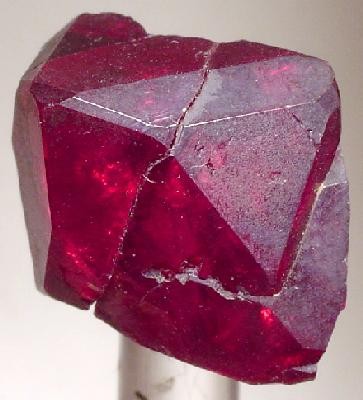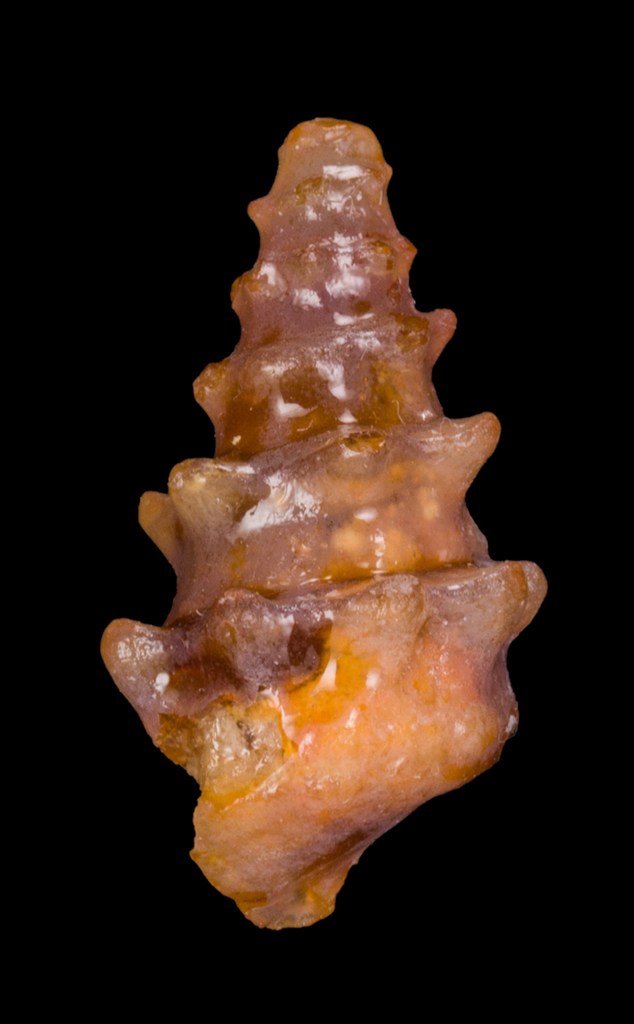|
Pseudomalachite
Pseudomalachite is a phosphate of copper with hydroxyl, named from the Greek for “false” and “malachite”, because of its similarity in appearance to the carbonate mineral malachite, Cu2(CO3)(OH)2. Both are green coloured secondary minerals found in oxidised zones of copper deposits, often associated with each other. Pseudomalachite is polymorphous with reichenbachite and ludjibaite. It was discovered in 1813. Prior to 1950 it was thought that dihydrite, lunnite, ehlite, tagilite and prasin were separate mineral species, but Berry analysed specimens labelled with these names from several museums, and found that they were in fact pseudomalachite. The old names are no longer recognised by the IMA.Berry L G (1950). American Mineralogist 35: 365 to 385 Type locality The type locality is the Virneberg Mine, Rheinbreitbach, Westerwald, Rhineland-Palatinate, Germany. This is an area of ancient copper mining dating back to Roman times, and worked intermittently up until 1872. ... [...More Info...] [...Related Items...] OR: [Wikipedia] [Google] [Baidu] |
Cornetite
Cornetite is a phosphate of copper with hydroxyl, named after the geologist . It was discovered in 1917. Type Locality Cornetite is most notably found in the Star of Congo mine, near Lubumbashi. Environment Cornetite is a rare secondary mineral in some hydrothermal copper deposits. Structure Unlike related phases such as Pseudomalachite Pseudomalachite is a phosphate of copper with hydroxyl, named from the Greek for “false” and “malachite”, because of its similarity in appearance to the carbonate mineral malachite, Cu2(CO3)(OH)2. Both are green coloured secondary minerals ..., the copper atoms are all five-fold coordinated by oxygen. There are three unique copper sites that are all quite distorted from ideal symmetry. Two are in approximate tetragonal pyramids and the third is essentially a trigonal bipyramidal coordination. Edge sharing polyhedra lead to copper-copper dimer formation, and the overall structure is a three-dimensional network of copper-oxygen ... [...More Info...] [...Related Items...] OR: [Wikipedia] [Google] [Baidu] |
Phosphate Minerals
Phosphate minerals contain the tetrahedrally coordinated phosphate (PO43−) anion along sometimes with arsenate (AsO43−) and vanadate (VO43−) substitutions, and chloride (Cl−), fluoride (F−), and hydroxide (OH−) anions that also fit into the crystal structure. The phosphate class of minerals is a large and diverse group, however, only a few species are relatively common. Applications Phosphate rock has high concentration of phosphate minerals, most commonly of the apatite group. It is the major resource mined to produce phosphate fertilizers for the agriculture sector. Phosphate is also used in animal feed supplements, food preservatives, anti-corrosion agents, cosmetics, fungicides, ceramics, water treatment and metallurgy. The largest use of minerals mined for their phosphate content is the production of fertilizer. Phosphate minerals are often used for control of rust and prevention of corrosion on ferrous materials applied with electrochemical conversion co ... [...More Info...] [...Related Items...] OR: [Wikipedia] [Google] [Baidu] |
Malachite
Malachite is a copper carbonate hydroxide mineral, with the formula Cu2CO3(OH)2. This opaque, green-banded mineral crystallizes in the monoclinic crystal system, and most often forms botryoidal, fibrous, or stalagmitic masses, in fractures and deep, underground spaces, where the water table and hydrothermal fluids provide the means for chemical precipitation. Individual crystals are rare, but occur as slender to acicular prisms. Pseudomorphs after more tabular or blocky azurite crystals also occur. Etymology and history The stone's name derives (via la, molochītis, frm, melochite, and Middle English ''melochites'') from Greek Μολοχίτης λίθος ''molochites lithos'', "mallow-green stone", from μολόχη ''molochē'', variant of μαλάχη ''malāchē'', "mallow". The mineral was given this name due to its resemblance to the leaves of the mallow plant. Malachite was mined from deposits near the Isthmus of Suez and the Sinai as early as 4000 BCE. It wa ... [...More Info...] [...Related Items...] OR: [Wikipedia] [Google] [Baidu] |
Australia
Australia, officially the Commonwealth of Australia, is a Sovereign state, sovereign country comprising the mainland of the Australia (continent), Australian continent, the island of Tasmania, and numerous List of islands of Australia, smaller islands. With an area of , Australia is the largest country by area in Oceania and the world's List of countries and dependencies by area, sixth-largest country. Australia is the oldest, flattest, and driest inhabited continent, with the least fertile soils. It is a Megadiverse countries, megadiverse country, and its size gives it a wide variety of landscapes and climates, with Deserts of Australia, deserts in the centre, tropical Forests of Australia, rainforests in the north-east, and List of mountains in Australia, mountain ranges in the south-east. The ancestors of Aboriginal Australians began arriving from south east Asia approximately Early human migrations#Nearby Oceania, 65,000 years ago, during the Last Glacial Period, last i ... [...More Info...] [...Related Items...] OR: [Wikipedia] [Google] [Baidu] |
Copper(II) Minerals
Copper is a chemical element with the symbol Cu (from la, cuprum) and atomic number 29. It is a soft, malleable, and ductile metal with very high thermal and electrical conductivity. A freshly exposed surface of pure copper has a pinkish-orange color. Copper is used as a conductor of heat and electricity, as a building material, and as a constituent of various metal alloys, such as sterling silver used in jewelry, cupronickel used to make marine hardware and coins, and constantan used in strain gauges and thermocouples for temperature measurement. Copper is one of the few metals that can occur in nature in a directly usable metallic form (native metals). This led to very early human use in several regions, from circa 8000 BC. Thousands of years later, it was the first metal to be smelted from sulfide ores, circa 5000 BC; the first metal to be cast into a shape in a mold, c. 4000 BC; and the first metal to be purposely alloyed with another metal, tin, to create bronze, c. 350 ... [...More Info...] [...Related Items...] OR: [Wikipedia] [Google] [Baidu] |
Tenorite
Tenorite is a copper oxide mineral with the chemical formula CuO. Occurrence Tenorite occurs in the weathered or oxidized zone associated with deeper primary copper sulfide orebodies. Tenorite commonly occurs with chrysocolla and the copper carbonates, azurite and malachite. The dull grey-black color of tenorite contrasts sharply with the often intergrown blue chrysocolla. Cuprite, native copper and Fe– Mn oxides also occur in this environment. In addition to the hydrothermal, tenorite also occurs as a volcanic sublimate from Vesuvius, Campania, and Etna, Sicily, Italy. As a sublimate it occurs with copper chlorides, alkali chlorides and cotunnite. The Vesuvian sublimate occurrence was originally named ''melaconise'' or ''melaconite'' by F. S. Beudant in 1832.Chisholm, Hugh, ed. (1911). Encyclopædia Britannica (11th ed.). Cambridge University Press Tenorite was named in 1841 after the Italian botanist Michele Tenore (1780–1861). See also * Cuprite CuO * List of minera ... [...More Info...] [...Related Items...] OR: [Wikipedia] [Google] [Baidu] |
Pyromorphite
Pyromorphite is a mineral species composed of lead chlorophosphate: Pb5( P O4)3 Cl, sometimes occurring in sufficient abundance to be mined as an ore of lead. Crystals are common, and have the form of a hexagonal prism terminated by the basal planes, sometimes combined with narrow faces of a hexagonal pyramid. Crystals with a barrel-like curvature are not uncommon. Globular and reniform masses are also found. It is part of a series with two other minerals: mimetite (Pb5( AsO4)3Cl) and vanadinite (Pb5( VO4)3Cl), the resemblance in external characters is so close that, as a rule, it is only possible to distinguish between them by chemical tests. They were formerly confused under the names green lead ore and brown lead ore (''German: Grünbleierz and Braunbleierz''). The phosphate was first distinguished chemically by M. H. Klaproth in 1784, and it was named pyromorphite by J. F. L. Hausmann in 1813. The name is derived from the Greek for ''pyr'' (fire) and ''morfe'' (form) due to ... [...More Info...] [...Related Items...] OR: [Wikipedia] [Google] [Baidu] |
Cuprite
Cuprite is an oxide mineral composed of copper(I) oxide Cu2O, and is a minor ore of copper. Its dark crystals with red internal reflections are in the isometric system hexoctahedral class, appearing as cubic, octahedral, or dodecahedral forms, or in combinations. Penetration twins frequently occur. In spite of its nice color it is rarely used for jewelry because of its low Mohs hardness of 3.5 to 4. It has a relatively high specific gravity of 6.1, imperfect cleavage and is brittle to conchoidal fracture. The luster is sub-metallic to brilliant adamantine. The "chalcotrichite" (from variety typically shows greatly elongated (parallel to 01 capillary or needle like crystals forms. It is a secondary mineral which forms in the oxidized zone of copper sulfide deposits. It frequently occurs in association with native copper, azurite, chrysocolla, malachite, tenorite and a variety of iron oxide minerals.Hurlbut, Cornelius S.; Klein, Cornelis, 1985, ''Manual of Mineralogy,'' 20th ed. ... [...More Info...] [...Related Items...] OR: [Wikipedia] [Google] [Baidu] |
Chrysocolla
Chrysocolla ( ) is a hydrated copper phyllosilicate mineral and mineraloid with formula (x<1) or . The structure of the mineral has been questioned, as a 2006 spectrographic study suggest material identified as chrysocolla may be a mixture of the copper hydroxide and . History The name comes from the χρυσός (''chrysos'') and κολλα (''kolla''), "gold" and "glue," in allusion to the name of the material used to solder |
Chalcedony
Chalcedony ( , or ) is a cryptocrystalline form of silica, composed of very fine intergrowths of quartz and moganite. These are both silica minerals, but they differ in that quartz has a trigonal crystal structure, while moganite is monoclinic. Chalcedony's standard chemical structure (based on the chemical structure of quartz) is SiO2 (silicon dioxide). Chalcedony has a waxy luster, and may be semitransparent or translucent. It can assume a wide range of colors, but those most commonly seen are white to gray, grayish-blue or a shade of brown ranging from pale to nearly black. The color of chalcedony sold commercially is often enhanced by dyeing or heating. The name ''chalcedony'' comes from the Latin ''chalcedonius'' (alternatively spelled ''calchedonius'') and is probably derived from the town of Chalcedon in Turkey. The name appears in Pliny the Elder's ''Naturalis Historia'' as a term for a translucent kind of jaspis. Another reference to a gem by the name of ''khalkedon'' ... [...More Info...] [...Related Items...] OR: [Wikipedia] [Google] [Baidu] |
Azurite
Azurite is a soft, deep-blue copper mineral produced by weathering of copper ore deposits. During the early 19th century, it was also known as chessylite, after the Type locality (geology), type locality at Chessy, Rhône, Chessy-les-Mines near Lyon, France. The mineral, a basic carbonate with the chemical formula Cu3(CO3)2(OH)2, has been known since ancient times, and was mentioned in Pliny the Elder's ''Natural History (Pliny), Natural History'' under the Greek name (κυανός: "deep blue," root of English ''cyan'') and the Latin name ''caeruleum''. Since antiquity, azurite's exceptionally deep and clear blue has been associated with low-humidity desert and winter skies. The modern English name of the mineral reflects this association, since both ''azurite'' and ''Azure (color), azure'' are derived via Arabic language, Arabic from the Persian language, Persian (لاژورد), an area known for its deposits of another deep-blue stone, lapis lazuli ("stone of azure"). Minera ... [...More Info...] [...Related Items...] OR: [Wikipedia] [Google] [Baidu] |
Apatite
Apatite is a group of phosphate minerals, usually hydroxyapatite, fluorapatite and chlorapatite, with high concentrations of OH−, F− and Cl− ions, respectively, in the crystal. The formula of the admixture of the three most common endmembers is written as Ca10( PO4)6(OH,F,Cl)2, and the crystal unit cell formulae of the individual minerals are written as Ca10(PO4)6(OH)2, Ca10(PO4)6F2 and Ca10(PO4)6Cl2. The mineral was named apatite by the German geologist Abraham Gottlob Werner in 1786, although the specific mineral he had described was reclassified as fluorapatite in 1860 by the German mineralogist Karl Friedrich August Rammelsberg. Apatite is often mistaken for other minerals. This tendency is reflected in the mineral's name, which is derived from the Greek word ἀπατάω (apatáō), which means ''to deceive''. Geology Apatite is very common as an accessory mineral in igneous and metamorphic rocks, where it is the most common phosphate mineral. However, occu ... [...More Info...] [...Related Items...] OR: [Wikipedia] [Google] [Baidu] |





